Devastating Impact of Australian Bushfires: Environment, Health & More
The devastating impact of Australian bushfires affects the environment, economy, and public health on a massive scale. From destroying unique wildlife habitats and worsening air quality to disrupting local industries and tourism, the consequences of these fires are a complex and ongoing challenge for the nation. Understanding this multifaceted impact is crucial for developing effective long-term strategies for prevention and recovery.
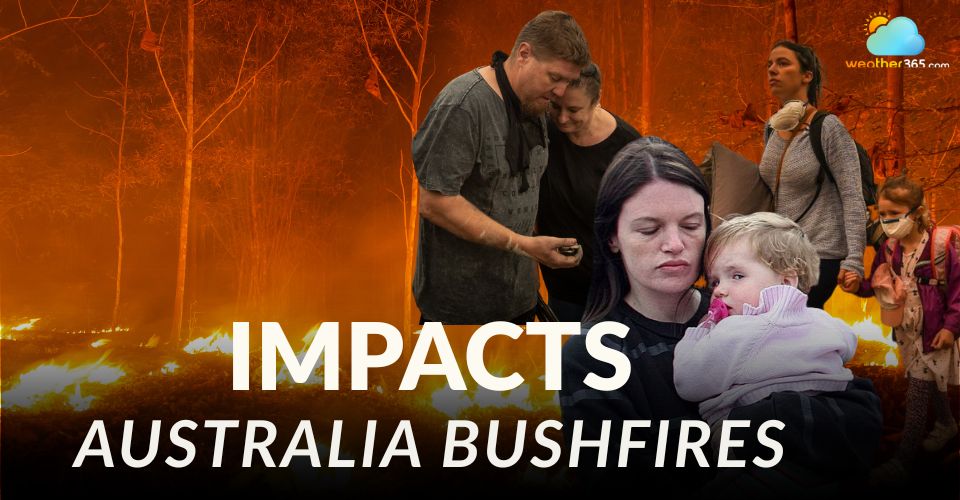
What was the impact of the Australian bushfires?
Impact of Australian bushfires: Environmental impact
The environmental impact of Australian bushfires is vast, leaving a deep scar on the country’s ecosystems.
Each fire season, millions of hectares of bushland, forests, and national parks are destroyed. One of the most devastating events in modern history is the 2019–2020 “Black Summer”.
The Black Summer fire burned over 24 million hectares, wiping out critical vegetation and green cover across the continent.
Bushfires also have a catastrophic impact on wildlife.
For example, the Black Summer bushfires killed or displaced over 3 billion animals.
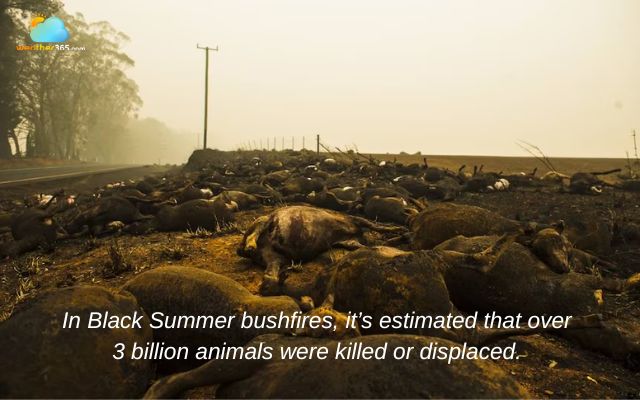
Black Summer bushfires
Iconic species such as koalas, kangaroos, and gliders faced massive population declines, while some already-endangered species were pushed closer to extinction.
This loss deeply disrupts the food chain and overall ecosystem stability.
Additionally, bushfires degrade biodiversity by destroying habitats and altering natural environments that may take decades to recover.
Air and water pollution are other complex concerns. Thick smoke fills the atmosphere, while ash and debris contaminate rivers and streams.
As a result, water quality is poor enough to affect aquatic life.
Besides, bushfires lead to erosion and soil degradation. These threats are to the environment and future vegetation growth.
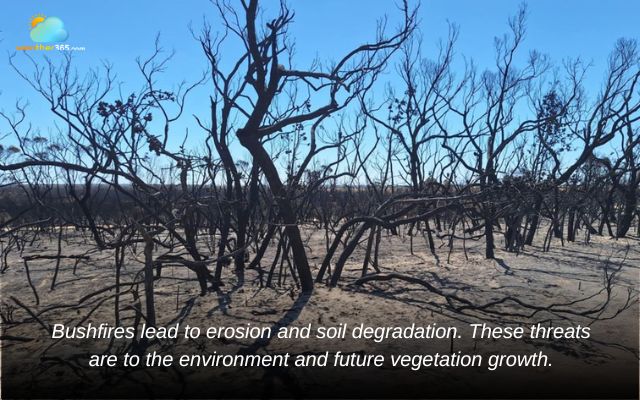
Bushfires lead to erosion and soil degradation
These ongoing environmental impacts highlight the urgent need for sustainable land management and climate action to reduce the severity of future bushfire seasons in Australia.
Also read:
Impact of Australian bushfires: Climate impact
The impact of Australian bushfires on the climate is severe, as these disasters release enormous quantities of greenhouse gases into the atmosphere.
During the 2019–2020 Black Summer alone, over 400 million tons of CO₂ were emitted, along with methane and other harmful gases.
This significantly contributes to global warming.
The massive smoke plumes from these fires have even traveled thousands of kilometers, reaching countries such as New Zealand and South America.
That smoke degrades air quality and spreads climate-related consequences far beyond Australia’s borders.
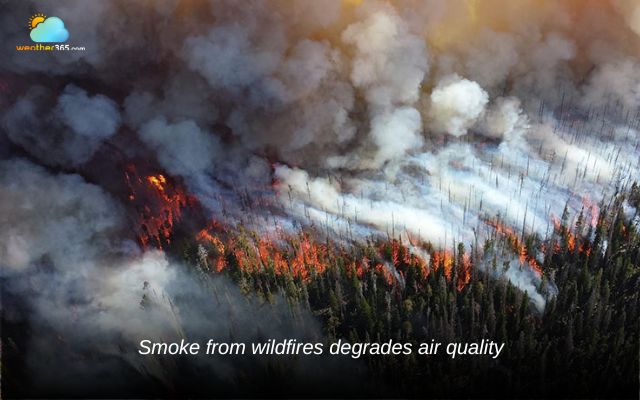
Smoke from wildfires degrades air quality
Impact of Australian bushfires: Human health impact
The impact of Australian bushfires on human health is profound and far-reaching.
Bushfire smoke is filled with fine particulate matter (PM2.5) that can penetrate deep into the lungs and bloodstream, triggering or worsening respiratory conditions such as asthma and bronchitis.
Prolonged exposure also increases the risk of heart disease and can even lead to premature death, particularly among vulnerable groups like children, the elderly, and those with pre-existing health issues.
Studies have linked prolonged exposure to bushfire smoke during pregnancy to an increased risk of premature birth and low birth weight.
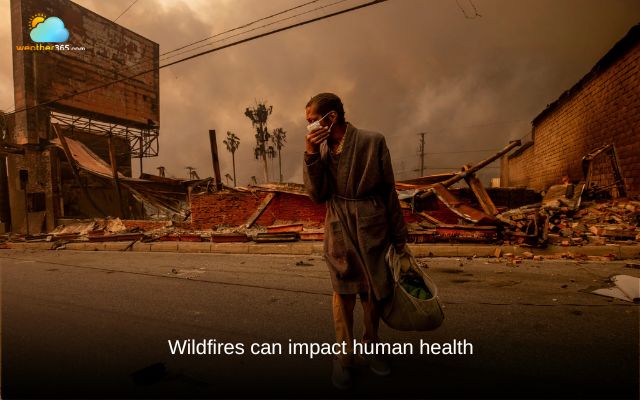
The impact of Australian bushfires on human health is profound
Beyond physical health, the mental toll of bushfires is equally devastating.
The trauma of losing homes, livelihoods, or loved ones, with the stress of emergency evacuations and the uncertainty of recovery, can cause long-term psychological impacts.
Many survivors experience heightened anxiety, depression, and post-traumatic stress disorder (PTSD), underscoring that the consequences of bushfires extend far beyond the flames.
The combined effects of physical and mental health issues place a significant burden on Australia's healthcare system and highlight the need for comprehensive support services during and after a fire season.
Impact of Australian bushfires: Community impact
The impact of Australian bushfires on communities is both immediate and long-lasting.
Each year, thousands of Australians are forced to evacuate their homes, often with little warning.
For many, returning is not an option, as their properties and possessions are completely destroyed.
This displacement leads to long-term homelessness, disrupted livelihoods, and fractured communities, making recovery a lengthy and challenging process.
Bushfires also cause deep cultural losses, particularly for Indigenous communities.
Fires can destroy sacred sites, hunting grounds, and bushland that hold immense spiritual and historical significance.
Alongside the physical destruction, there is an erosion of cultural knowledge and traditional fire management practices that have been passed down for generations.
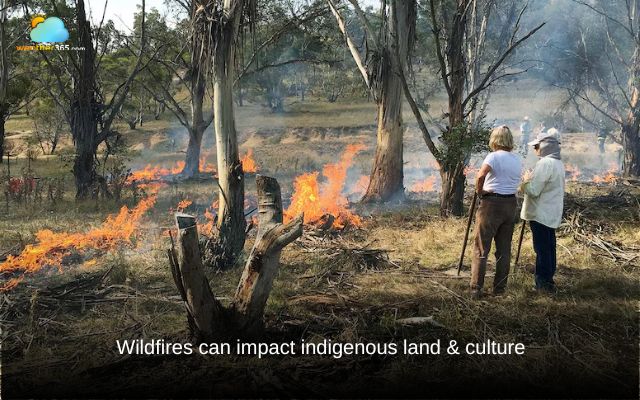
Wildfires can impact indigenous land & culture
The strain on emergency services during major bushfire events is another critical concern.
Firefighters, volunteers, and health workers face relentless pressure, often working in dangerous conditions for extended periods.
This not only puts their physical safety at risk but also contributes to burnout and mental health challenges, further highlighting the far-reaching social cost of bushfires in Australia.
A long recovery after wildfires
Recovery in Australia after major wildfires is a slow and complex process. It often takes decades or even centuries to recover.
Many native animals, such as cockatoos, parrots, possums, and bats, depend on hollow logs or tree hollows for shelter and breeding.
However, when bushfires destroy these vital habitats, they vanish in hours, and experts warn it can take 100 to 200 years for such hollows to naturally form again.
Ecologists describe this as a “complete state change”, where the environment is fundamentally altered for generations.
The damage also extends below the surface. Severe droughts before recent bushfires dried out the soil, making it more vulnerable to burning.
In many affected areas, not only was vegetation lost, but the soil itself was scorched, stripping away essential nutrients.
Without healthy soil, natural regeneration slows dramatically, delaying the return of plants, food sources, and stable ecosystems.
This means the long-term recovery after Australian wildfires is not just about replanting trees, but also about restoring the very foundation of the environment that could take far longer than a human lifetime.
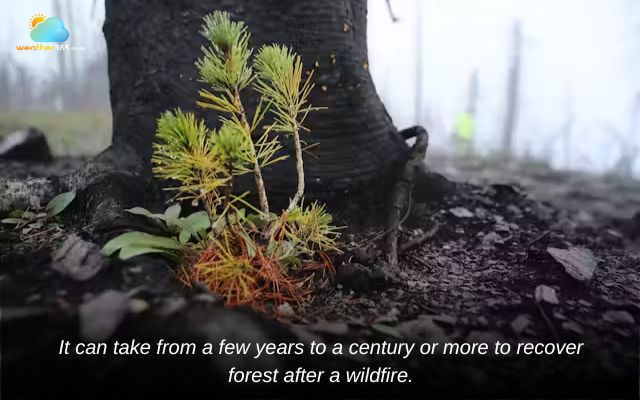
It can take a long time to recover the forest after a wildfire
Immediate actions
After Australia’s devastating wildfires, experts stress that immediate action is essential to support environmental recovery and protect biodiversity.
One proposed step is a moratorium on logging in fire-affected regions in order to regenerate the forest without further disturbance.
Another priority is protecting unburned areas where refuges for wildlife and seed banks for vegetation regrowth are.
Some experts also support cultural burns—a traditional Indigenous fire management method involving low-intensity, cool-burning fires.
These controlled burns reduce flammable material like leaf litter and kindling, lowering the risk of large, destructive bushfires.
While cultural burning is gaining renewed interest, ecologists caution that today’s challenges such as denser populations, complex infrastructure, and climate change.
Ultimately, experts agree that tackling climate change is critical for the long-term survival of Australia’s unique biodiversity.
While some ecosystems may recover, others remain in doubt, and a significant portion is in serious trouble.
The road ahead will require a mix of immediate interventions, sustainable land management, and strong climate action to give Australia’s bushland the best chance of survival.
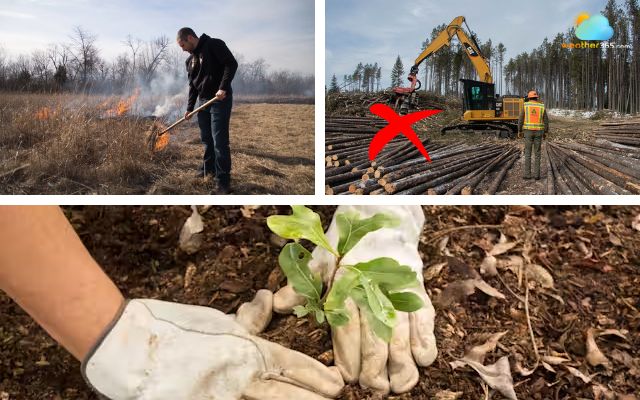
Necessary and immediate actions to prevent bushfires
Conclusion
The impact of Australian bushfires extends far beyond the immediate destruction of land and property. These fires cause severe environmental damage, impact the climate, disrupt communities, and pose serious risks to human health. Addressing this crisis requires a combination of effective fire management, habitat restoration, and community efforts.

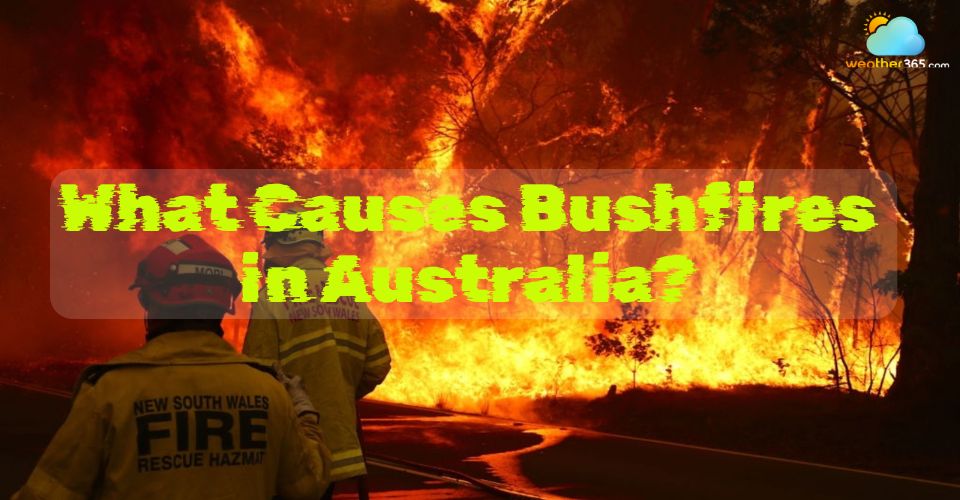
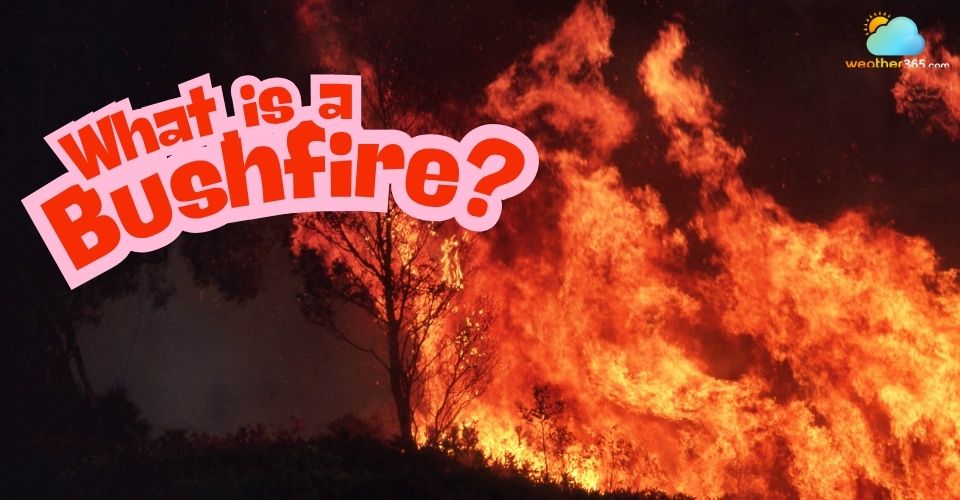
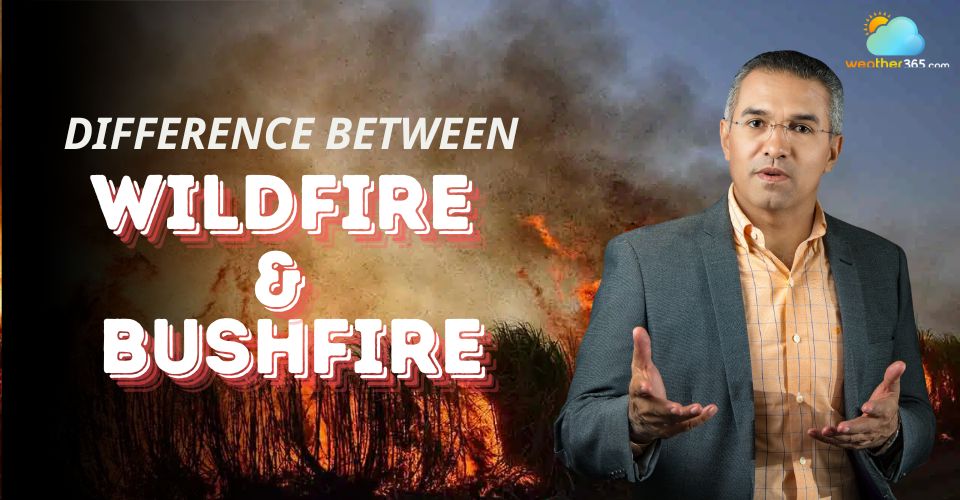
0 Comment
Leave a comment
Your email address will not be published. Required fields are marked *